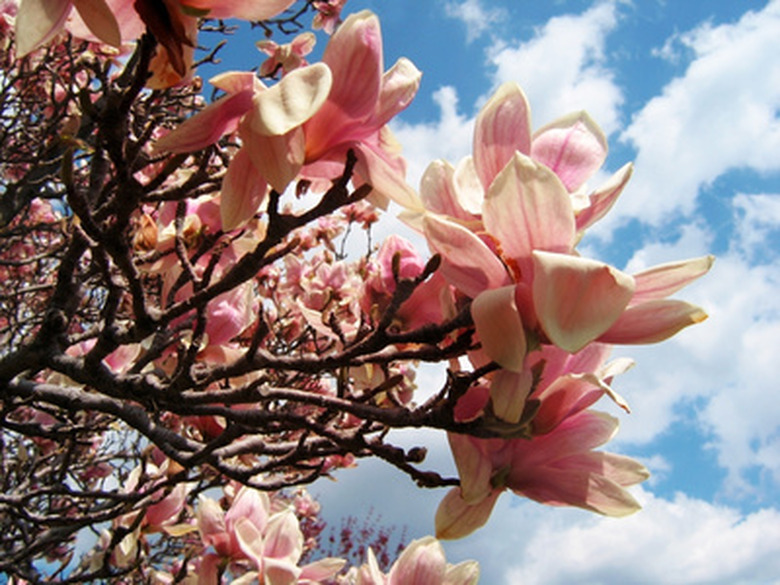Magnolia Black Mildew Treatment
Black, sooty mold and mildew appears on magnolia trees when the tree suffers a heavy infestation of magnolia scale insects (Neolecanium cornuparvum). The insect's voracious feeding and the accumulation of the black moldy mildew from the scales' secretions often kill the tree over time if left untreated.
Life History
The magnolia scale threatens only the magnolia tree's overall health and causes unsightly black mildew. Each August, the magnolia scale matures and the female quickly gives birth, according to Cornell University. A young scale, known as a crawler, leaves its mother to choose a place to feed and build its protective covering.
Scale Appearance
Adult magnolia scales often measure 1/2 inch in diameter, according to the Ohio State University Extension. The scale appears smooth and tan in color. As the insect matures, it develops a waxy substance around its body. The insect's life and breeding practices takes place under this covering.
- Black, sooty mold and mildew appears on magnolia trees when the tree suffers a heavy infestation of magnolia scale insects (Neolecanium cornuparvum).
- A young scale, known as a crawler, leaves its mother to choose a place to feed and build its protective covering.
Types of Scale Damage
The magnolia scale encrusts the branches of the magnolia tree. They favor branches 1 to 2 years old, but a heavy infestation will quickly spread to all branches, according to Penn State University. The magnolia scale feeds on the tree by attaching its strong mouth and sucking the tree's sap. The tree's flower and foliage production will be reduced and the tree's growth will appear distorted.
Effects
The scale insects damage a tree's health and vigor. Scales continuously eat the sap of the tree and secrete a clear substance known as honeydew. The honeydew is the digested tree sap. It drips in abundance from the insect onto the tree's foliage and branches. Over time, the honeydew begins to grow black, moldy mildew. The black fungus attracts insects to the tree, such as flies, wasps, bees and ants.
- The magnolia scale encrusts the branches of the magnolia tree.
Control Methods
Control of the black mildew begins by eliminating the scales that cause the fungus to grow. Horticultural oils applied in August combat the infestations. To kill overwintering scale nymphs, apply dormant oils in October, November and March. Lady bugs are a biological control method for light scale infestations. Lady bugs are available at nurseries, garden supply stores or online. Release ladybugs on newly purchased and planted magnolia trees to control light scale infestations.
Prevention
Insecticides are effective only if applied in the late fall or early spring. Once the scale's protective coating is in place, it's impenetrable by insecticides. Applied early in the season, the insecticides kill the young crawlers and prevent adult insects from breeding. Thiamethoxam, imidacloprid and cyfluthrin work on the crawlers. Apply according to the directions on the label.
- Control of the black mildew begins by eliminating the scales that cause the fungus to grow.
- Applied early in the season, the insecticides kill the young crawlers and prevent adult insects from breeding.
Solution
Once the scales have been killed, remove the black, moldy mildew using a strong stream of water. A teaspoon of detergent per gallon of water applied to the tree and foliage removes or reduces the mildew, according to the Ohio State University Extension.
